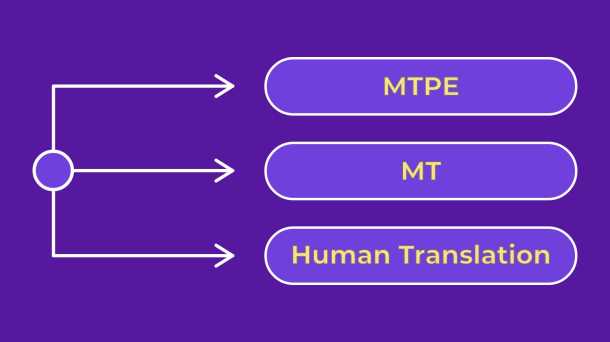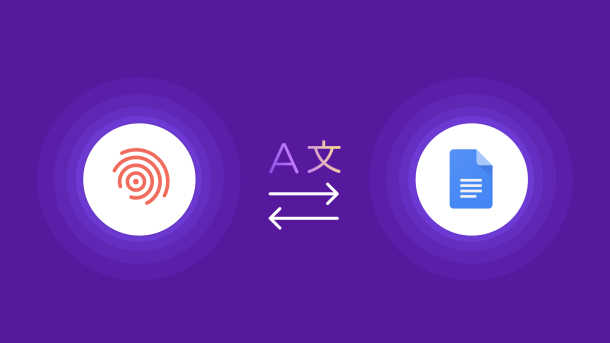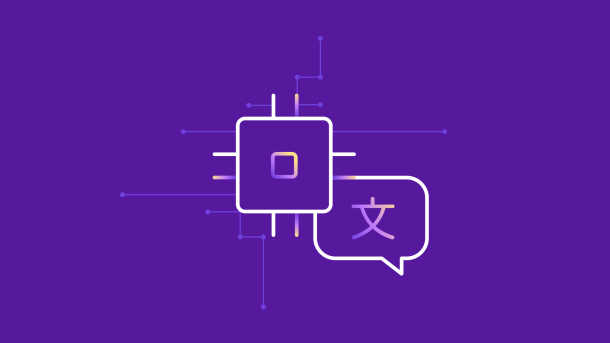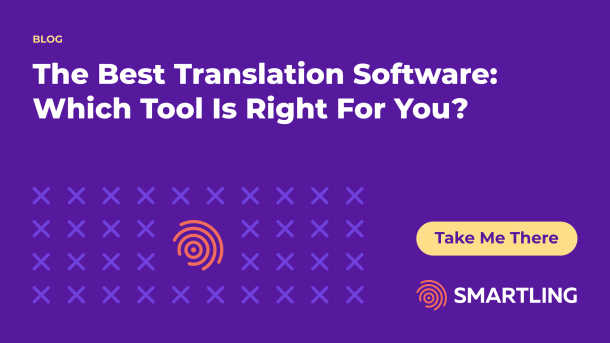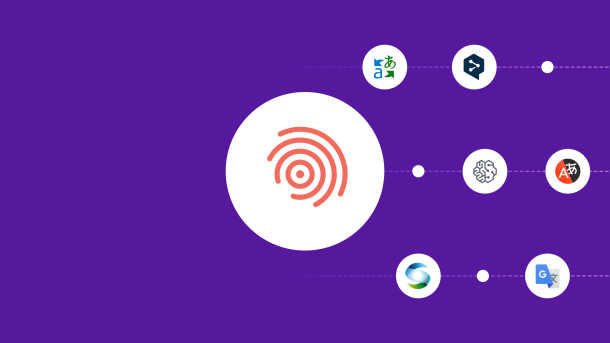Machine-driven translation services are rapidly expanding, thanks to advances in artificial intelligence (AI) and large language model technologies. Though imperfect, machine translation (MT) creates more access to accurate, speedy translations. MT isn’t ideal for every situation, though—its application depends on your project, its scope, and the translated material’s intended purpose.
MT uses software to translate text or speech from one language to another. It also automates the translation process using machine learning (ML) and AI to draw from vast amounts of language data.
When to use machine translation software
While MT can’t yet replace a human translator’s accuracy, tone, and ability to understand social nuances, it’s useful for quick, low-stakes translation between source and target languages.
MT is the best choice for large-scale projects that require straightforward translations, such as:
- Projects with a large amount of material to translate within a short period
- Low complexity projects without brand guidelines or legal restrictions
- Limited visibility content that is easy to edit or modify post-publication
Here are a few scenarios where MT might be the best option:
Quick text communication: Companies with a global presence often need to translate their documents, websites, or applications into multiple languages. Here, MT enables fast and efficient localization. Translate an email or a note into a target language to stay on the same page as your recipient.
Technical documents: MT is useful for translating technical documents since they rely less on nuance and more on strict interpretation. While accuracy is still important (ask anyone who has assembled a consumer item using foreign-language instructions), MT software is accurate enough to convey instructions and preserve the text’s intent.
Social media management: MT can analyze simple posts in various languages to help companies understand customers and respond in their native language. Some social media platforms like Facebook offer a translation option that converts text to the user’s current language settings with just a click.
International events: For live events like conferences or sports competitions, where participants come from various linguistic backgrounds, MT tools can immediately translate speeches or commentaries. They can also provide post-session transcriptions and notes for everyone to reference.
When to use human translation
A native language human translator uses their understanding of both the source and target languages to create a faithful translation with the full nuance and tone of a native speaker. A human translator’s skill exceeds MT’s current capabilities to capture natural language.
Human translation is best when:
- The cost of inaccuracies is high, such as with legal documents or medical information.
- You cannot update or edit published content.
- Brand consistency and creativity are crucial to content performance (such as when translating a sales page for a new product).
Here are some scenarios where human translation might be the best choice:
Legal documentation: Precision and accuracy are vital to complex legal terminology. These documents require factual accuracy to render decisions. Errors could potentially lead to legal consequences, misapplication of the law, or delays in reaching a resolution.
Medical records and reports: Medical records have health and legal consequences, so it’s essential to translate this information accurately. Miscommunication or misinterpretation of terms may lead to adverse health outcomes.
Publications: Books, magazines, and any content that can’t be edited post-publication require human translation. This ensures total accuracy and fidelity to the original text.
Brand marketing: Ensuring brand message consistency across different languages requires a human touch. A native language translator maintains the original content’s nuances and creativity while making it relatable for a foreign audience.
Culturally sensitive material: Content that must adhere to cultural norms and sensibilities benefits greatly from human translation. Skilled translators can interpret context better than machines, ensuring culturally sensitive translations.
What’s the best machine translation software?
With so many options, finding the best MT tool for your needs can be tough. Let's take a look at how the top tools compare.
Amazon Translate
Translating content word-for-word can distort the message. To prevent this, Amazon Translate uses a neural network. Its neural machine translation (NMT) tool considers the context of source sentences and previously translated content, which allows translations to retain the original text’s meaning and maintain fluency.
Features:
- Active Custom Translation gives you more control over translated text without forcing you to build or maintain a translation model from scratch.
- No language code? No problem. Amazon Translate automatically identifies your content’s source language.
- Real-time translation delivers translated content on demand.
Pros:
- Amazon Translate offers pay-per-use pricing. This makes it one of the more cost-effective solutions for organizations with minimal or growing translation needs.
- The platform supports 75 languages for a total of 5,550 translation combinations.
- You can translate various content formats in bulk with its application programming interface (API). These formats include Word documents, Excel spreadsheets, and more.
Cons:
- Integrating Amazon Translate requires some coding.
- Some users have had occasional issues with translation accuracy, mechanics, and failed translation for detected words or phrases.
Best for: Small- and medium-sized businesses (SMBs), mid-market, enterprise
Use case: Use Amazon Translate to convert books and technical manuals into over 75 languages and sell them through Amazon’s self-publishing services.
DeepL Translator
Known for its reliable quality, DeepL Translator helps professional translators work faster. Because it uses an ML model, the tool becomes better at translating your text over time. That means less time spent editing translations.
Features:
- DeepL Translator offers both formal and informal tones. These help to create truly localized experiences for website visitors and users.
- All paid plans feature end-to-end encryption and immediate text deletion to ensure maximum data security.
- The tool features a computer-assisted translation (CAT) tool integration. With it, you can integrate DeepL Translator’s translations into other tools' translation results—Smartling included.
Pros:
- Users know DeepL Translator for its high-quality translations that accurately reflect the original text's meaning in the available target languages.
- DeepL Translator’s paid plans allow unlimited text translation across its browser, desktop, and mobile apps. (It’s available on Mac, Windows, iOS, and Android.)
- Given that there are no translation limits on paid plans, this tool is among the more cost-effective options.
Cons:
- DeepL Translator supports only around 30 languages, which is fewer than alternatives. Although 700+ language pairs are possible, this engine may not meet your needs, depending on your source and target languages.
- The per-user limits on translating whole files may be low for some. For example, the Starter plan only allows five files of up to 10 MB each per month.
Best for:
- SMBs, mid-market
Use case: Use DeepL to translate sensitive and proprietary information by marrying human translation skills with the speed of MT.
CrossLang
CrossLang’s philosophy is that specialized knowledge is a must to effectively apply MT. This app ensures a close match to brand tone and terminology for specific use cases. Rather than provide the usual generic solutions, it instead focuses on customization.
Features:
- The Translation Gateway gives access to thousands of mainstream and specialized engines via a translation management system (TMS) like Smartling or an API. Plus, automated engine advisory identifies the right translation engine for your needs in minutes.
- Integrations are available for WordPress, Drupal, Bitbucket, Gitlab, AWS S3, and more. The Translation Development Kit is also an efficient option for setting up custom integrations.
- An optional secure translation interface ensures that private data isn’t as vulnerable as it would be on public platforms like Google Translate.
Pros:
- CrossLang supports more than 600 language pairs.
- Its team of specialists is available to advise you and, if necessary, develop a custom machine translation software solution. (The team has expertise with MT, TMS, CAT, and natural language processing.)
- CrossLang consolidates invoices from multiple services and engines into one each month.
Cons:
- CrossLang offers less transparency about its features and less help documentation than alternatives.
- Because it’s so focused on custom solutions, CrossLang may not be the best fit for translation projects that don’t require a customized approach.
Best for:
- Mid-market, enterprise
Use case: CrossLang’s online publishing integrations make it ideal for ecommerce users and content creators who need a streamlined way to serve web content in many different languages.
Google Translate
Google Translate is among the most popular MT software tools. For many of its 100+ available languages, it uses neural translation technology to deliver accurate, natural translations.
Features:
- Custom translation models allow you to adjust terminology and tone for a specific domain or company.
- Batch translation helps you move content through workflows faster.
- Model training and management enable more accurate domain- and context-specific translations.
Pros:
- Native speakers inform and improve translations.
- Google Translate’s Cloud Translation API Basic and Advanced plans allow you to translate unlimited characters every day.
- Offline mode means you can keep translating without an internet connection.
Cons:
- Google Translate is not ideal for translating confidential information.
- Its plans are leaner and less flexible than alternatives’. For example, the Basic plan doesn’t support a glossary, and you can only translate two content types.
Best for: SMBs, mid-market
Use case: Google Translate is great for translating internal business communications and collaborating on internal projects, emails, and other business-related translation needs in popular languages.
Microsoft Translator
Rounding out this list is Microsoft Translator, which—like all the tools here—connects with Smartling. It handles document and text translation with NMT as the default for all supported languages.
Features: Dictionary Lookup finds alternative translations, and Dictionary Examples helps you understand the context of selected words. Batch translation is available. There's no limit on the number of characters you can send in a single translation request. Custom Translator supports industry-specific translation. This increases content accuracy and translation quality during the translation process.
Pros: With just a single request, you can translate source text into multiple languages at once. Translator is scalable and works across Microsoft products, including Office, Edge, SharePoint, Bing, and more. Microsoft Translator stores no customer data or submitted text in data centers. It also holds several compliance certifications, including HIPAA, ISO, SOC, and FedRAMP.
Cons: Depending on the language pair, Microsoft Translator sometimes translates text less accurately than Google Translate, DeepL, and other alternatives. Users have reported that this tool doesn’t always do well with the nuances of various languages. For example, it may not translate slang appropriately.
Best for: Mid-market, enterprise
Use case: Microsoft Translate is useful for customer support scripts, internal communications, and web localization.
Smartling’s Neural Machine Translation Hub
Why pick one engine when you can have access to the best fit for your brand and content? Smartling’s NMT Hub integrates with all major MT engines listed above, but it also goes beyond a list of engines to deliver services with the right level of automation or human intervention. These services include:
- AI-powered human translation: AI determines the best MT engines to apply initial translations. An expert linguist then steps in to deliver fast, high-quality translation.
- Raw publishing: MT software directly publishes translation outcomes without human intervention.
Smartling’s NMT Hub uses AI to select the best MT engine to instantly deliver the highest-quality translation results. This results in reduced post-editing efforts on a large scale (some customers see a reduction of over 350%) and ensures the best engine choice for raw publishing scenarios.
And while popular MT engines may break placeholders or tags, causing errors in your applications, Smartling’s NMT Hub identifies and corrects these errors with pre- and post-processing rules before your translations deliver.
The NMT Hub also benefits from the advantages of Smartling’s translation software. It gives users the ability to handle all language content and translation needs at scale and administer MT and human translation across complex formats from a central workspace.
Learn more about Smartling’s translation services
Smartling is more than just a translation software. It’s a flexible, full-service solution that gives fast-growing companies access to next-level human and machine translation services for scalable content transformation.
Watch a demo of Smartling today to see how we deliver the best combination of speed, scale, and accuracy.

